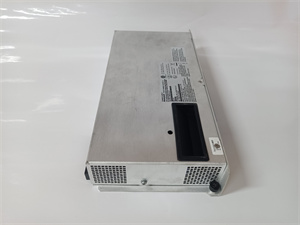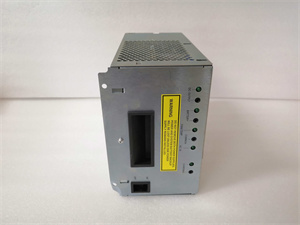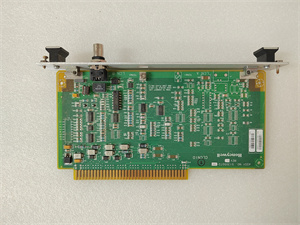Description
1. Detailed parameter table
| Parameter name | Parameter value |
|---|---|
| Product model | R7247C1001 |
| Manufacturer | Honeywell |
| Product category | Flame amplifier |
| Type | Rectification |
| Flame failure response time | 2 – 4 seconds |
| Self – checking feature | Dynamic self – check |
| Compatible primary safety controls | R 4140, BC 7000, R 4075 C, D, E, R 4138 C, D, FSP 5075 |
| Compatible flame sensors | Gas, oil, coal – ultraviolet flame sensor C 7012 E, F |
| Weight | 1.5 kg (shipping weight indication, may suggest overall unit mass) |
| Discontinuation status | Discontinued as of April 8, 2022 |
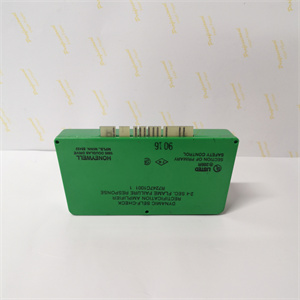
HONEYWELL R7247C1001
2. Product introduction
The Honeywell R7247C1001 is a flame amplifier that was an integral part of industrial safety and control systems. It was designed to play a crucial role in ensuring the proper operation of combustion processes in various industrial setups.
This flame amplifier was engineered to respond to signals from specific flame detectors. When a flame was present in a combustion system, the R7247C1001 would detect the signal from the flame detector, such as the gas, oil, or coal – ultraviolet flame sensor C 7012 E, F. It would then indicate the presence of the flame, which was essential for the safe and efficient operation of equipment like boilers, furnaces, and incinerators. In industrial applications where combustion processes are involved, reliable flame detection and indication are vital. The Honeywell R7247C1001 provided this functionality, working in tandem with primary safety controls like R 4140, BC 7000, and others. It was a solid – state plug – in unit, making it convenient for integration into existing control systems.
3. Core advantages and technical highlights
Dynamic self – check for enhanced safety
The Honeywell R7247C1001 came equipped with a dynamic self – check feature. This was a significant advantage as it continuously monitored its own functionality. In industrial environments, where the consequences of a malfunctioning flame amplifier could be severe, this self – check mechanism ensured that the unit was always in proper working order. For example, if there was an internal component failure that could potentially lead to incorrect flame detection or indication, the self – check feature would identify the problem. This not only enhanced the safety of the combustion process but also reduced the likelihood of unplanned shutdowns, saving time and costs associated with troubleshooting and repairs.
Quick flame failure response
With a flame failure response time of 2 – 4 seconds, the R7247C1001 was designed to act rapidly in case of a flame loss. In industrial combustion systems, a quick response to flame failure is critical. For instance, in a large – scale power plant boiler, if the flame suddenly goes out, the R7247C1001 would detect this within a short time frame. This allows the associated safety systems to take immediate action, such as shutting off the fuel supply, to prevent dangerous situations like fuel accumulation and potential explosions.
Wide compatibility
This flame amplifier was highly compatible with a range of primary safety controls and flame sensors. It could work with BC 7000, R 4140, R 4075 C, D, E, R 4138 C, D flame safeguard controls. Additionally, it was suitable for use with gas, oil, and coal – ultraviolet flame sensors like C 7012 E, F. This wide compatibility made it a versatile choice for different industrial applications. Whether it was a small – scale industrial furnace or a large – scale petrochemical plant’s combustion system, the Honeywell R7247C1001 could be integrated into the existing setup, providing seamless flame detection and indication services.

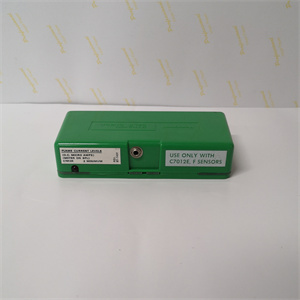
HONEYWELL R7247C1001
4. Typical application scenarios
In the power generation industry, the Honeywell R7247C1001 was used in power plants that rely on combustion – based energy production, such as coal – fired, gas – fired, or oil – fired power plants. In these plants, boilers are a key component. The R7247C1001 would be installed as part of the boiler’s flame monitoring and control system. It would detect the presence of the flame in the boiler’s combustion chamber, ensuring that the fuel was being burned efficiently. If the flame failed, it would quickly signal the safety systems to take corrective action, preventing any damage to the boiler and ensuring the continuous and safe operation of the power plant.
For industrial heating applications, like those in factories or manufacturing plants, the R7247C1001 was also crucial. These facilities often use large – scale furnaces or heaters to provide heat for various processes. The flame amplifier would monitor the flames in these heating units. In a steel manufacturing plant, for example, the furnace needs to maintain a stable flame for the melting of steel. The R7247C1001 would ensure that the flame was present and stable, and in case of any issues, it would trigger safety mechanisms to protect the furnace and the overall production process.
In the waste – to – energy sector, incinerators are used to burn waste and generate energy. The Honeywell R7247C1001 played a vital role in these incinerators. It monitored the flames in the incineration chamber, ensuring that the waste was being burned completely and efficiently. If the flame went out, it would quickly respond, preventing the build – up of unburned waste and potential environmental hazards.
5. Related model recommendations
Honeywell FSP5075A1
This is a flame amplifier module that, like the R7247C1001, is used in combustion – related applications. It can be considered as a replacement option in some cases where the R7247C1001 is no longer available. The FSP5075A1 also interfaces with flame safeguard controls and flame sensors, providing similar functionality in terms of flame detection and indication. However, it may have different technical specifications, such as slightly different response times or compatibility with a different subset of safety controls, so careful consideration of the specific application requirements is needed.
Honeywell R4140
A flame safeguard control that was often used in conjunction with the R7247C1001. While not a direct replacement for the flame amplifier, in a system where the R7247C1001 is being phased out, understanding the role of components like the R4140 is crucial. It works in the overall combustion control system, and when considering system upgrades or replacements, the compatibility of new flame amplifier models with the existing R4140 (if still in use) needs to be evaluated.
Honeywell BC7000
Another flame safeguard control that was compatible with the R7247C1001. Similar to the R4140, it was part of the combustion control ecosystem. When looking for alternatives to the R7247C1001, the interaction between new flame amplifier models and the BC7000 should be taken into account. If the BC7000 is still operational in a plant, ensuring that the new flame amplifier can work effectively with it is essential for maintaining the integrity of the combustion control system.
Honeywell C7012E/F
These are ultraviolet flame sensors that were used with the R7247C1001. Although they are sensors and not flame amplifiers, they are an important part of the overall flame detection system. In case of a system overhaul due to the unavailability of the R7247C1001, the compatibility of new flame amplifier models with the existing C7012E/F sensors (if still in use) should be verified. There may be newer sensor models available that offer improved performance or better compatibility with modern flame amplifier technology.
6. Installation, commissioning and maintenance instructions
Installation preparation
Before installing the Honeywell R7247C1001, it was essential to ensure that the installation area was clean and free from excessive dust, moisture, and any potential sources of electromagnetic interference. Since it was used in combustion – related applications, the area should also be well – ventilated to prevent the build – up of combustible gases. Use appropriate tools, such as screwdrivers and wire strippers, for the physical installation. Disconnect all power sources from the combustion control system to avoid electrical shocks during installation. Verify the compatibility of the R7247C1001 with the existing flame sensors, primary safety controls, and other components of the combustion control system. Check the wiring diagrams provided in the product manual to ensure correct connections.
Maintenance suggestions
For regular maintenance of the Honeywell R7247C1001, visually inspect the unit periodically for any signs of physical damage, such as cracks in the casing or loose connections. Since it had a dynamic self – check feature, monitor the status indicators (if available) to ensure that the self – check was functioning properly. Clean the unit to remove any dust or debris that may have accumulated over time, as this could affect its performance. When the R7247C1001 was in operation, check for any abnormal behavior, such as incorrect flame indication or excessive heat generation. In case of a malfunction, first check the connections to the flame sensors and safety controls. If the problem persisted, refer to the product manual for detailed troubleshooting steps. However, as the product has been discontinued, finding replacement parts may be challenging, and in such cases, considering alternative models may be necessary.
7. Service and guarantee commitment
When the Honeywell R7247C1001 was available, Honeywell provided a certain level of service and guarantee. The product likely came with a standard warranty period during which any manufacturing defects would be rectified free of charge. Honeywell’s technical support teams were available to assist customers with installation, commissioning, and troubleshooting. They could offer guidance on integrating the R7247C1001 into existing systems and help resolve any issues related to its performance. However, due to its discontinuation, these services are no longer directly applicable in the same way. But Honeywell may still offer some level of support in terms of providing information on alternative products that can replace the R7247C1001 and help customers transition smoothly to new solutions for their flame detection and combustion control needs. This commitment, even after discontinuation, reflects Honeywell’s long – standing dedication to its customers in the industrial automation and safety sectors.
We've got you covered
We give you access to a global supply of automation parts at your fingertips, ensuring that manufacturers around the world can avoid unnecessary downtime and continue to do what they do best – making our world possible.
Full 12-month warranty on all components
Dedicated after-sales support
Same-day dispatch on 1000s of parts
All units are fully tested
Continue Searching
We're here when you need us
What happens next?
- 1. Email confirmation
You will get an email confirming that we have received your enquiry. - 2. Dedicated Account Manager
One of our team will be in touch to confirm your part(s) specification and condition. - 3. Your quote
You will receive a comprehensive quote tailored to your specific needs.
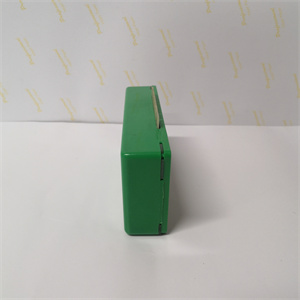
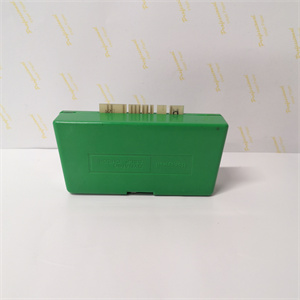
 Full 12-month warranty
Full 12-month warranty Available for dispatch immediately
Available for dispatch immediately We deliver worldwide
We deliver worldwide Full 12-month warranty on all components
Full 12-month warranty on all components
